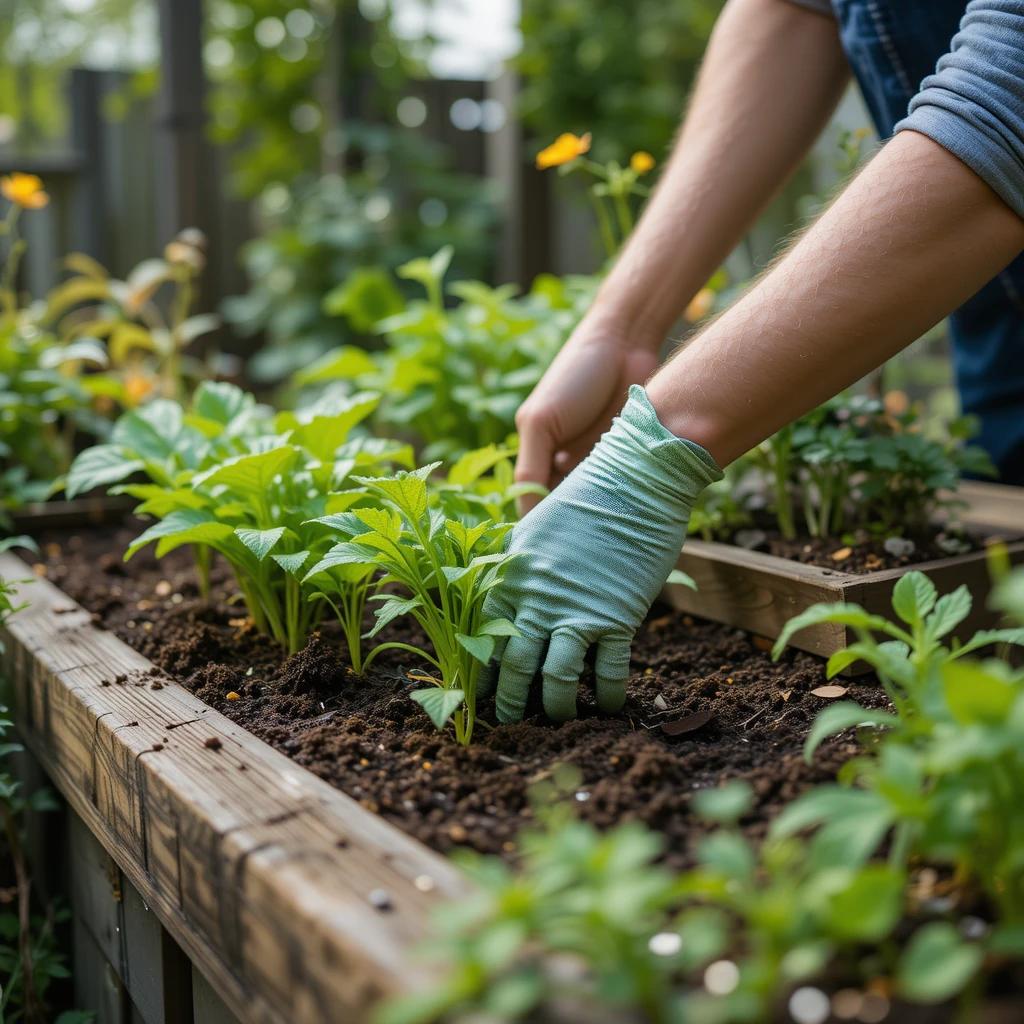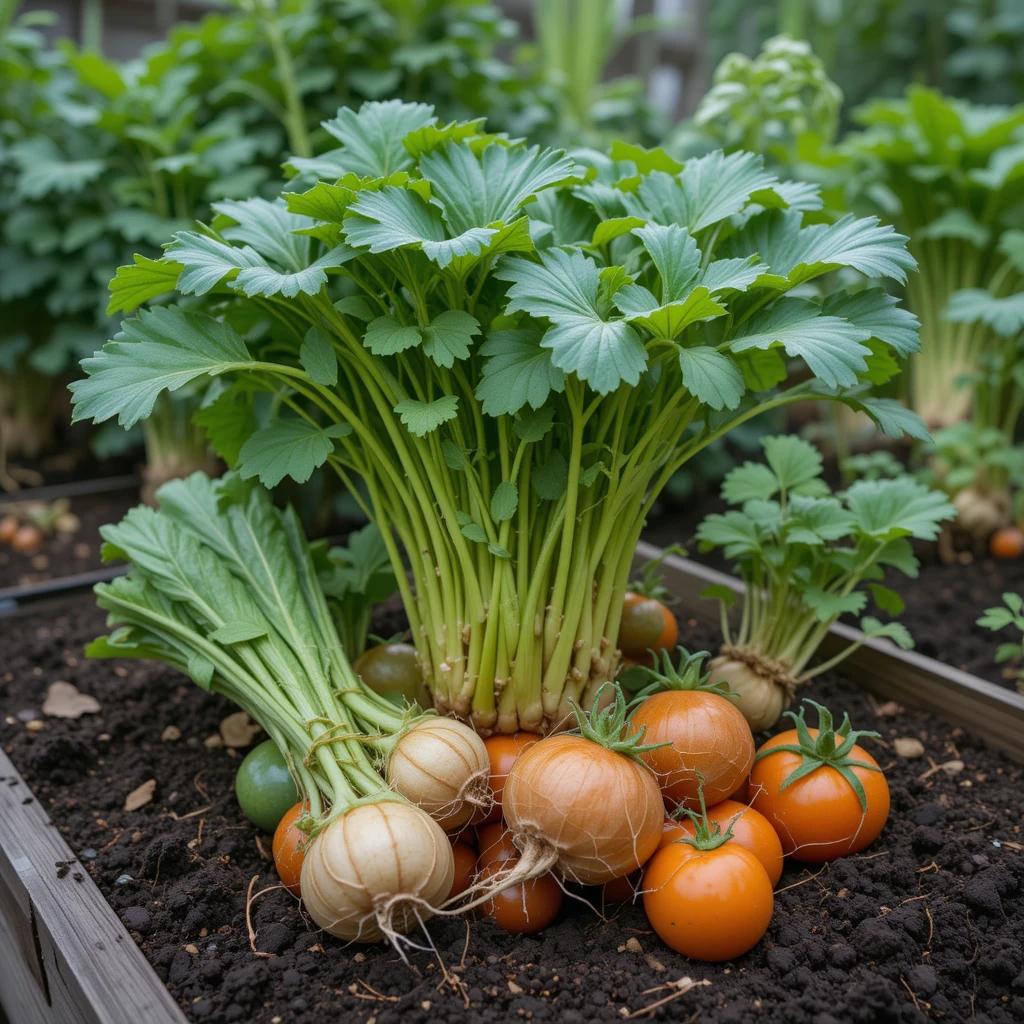To make the most of a verdant indoor garden, your kitchen need not be large or surrounded by acres of greenery. The rise of urban kitchen garden has changed our perspective on growing food, as even tiny apartments now have the potential to produce herbs and vegetables straight from the kitchen. Whether you’re a home cook seeking to enhance flavour in your recipes, a health-conscious chef or a weekend foodie trying to stick to Do It Yourself solutions, this guide is for you.
This article outlines best practices for establishing your ideal urban kitchen garden from choosing the right place for it, to harvesting your first crop. With some planning
Why Urban Kitchen Gardening Matters
Urban gardening isn’t merely fashionable; it’s a sustainable method of growing your own food and reducing your dependence on store-bought produce. It not only cuts down your carbon footprint but also provides freshness and control over your diet that you can not match.
You might pick basil from the plant as you make pesto, or tear fresh leaves of lettuce off right from your kitchen windowsill. Raising your food takes the guesswork out of pesticide application and provides hearty, nutritious and tasty additions to your meals.

Advantages of Cultivating Your Food
- Fresh Flavors: There’s no flavour like that of fresh herbs or homegrown vegetables.
- Affordability: Whether it be in terms of actual monetary cost or just rotational, keeping your own crops can be many times cheaper than buying it from a store, especially organic ones.
- Stress Relief: Caring for your plants is a good stress buster and gives you a sense of accomplishment.
- Sustainable: Urban gardening minimizes the packaging and transportation waste related to food products.
Choosing the Right Space
The first step to establishing an urban kitchen garden is finding the right place. And don’t worry if you think you don’t have many options; even the corner of your windowsill can turn into a bustling garden space.
Options for Urban Gardening
Balcony: If you’re fortunate enough to have a balcony, it’s ideal for plants that need full sunlight, like cherry tomatoes.
Windowsill: Bright windowsills are good for herbs such as basil, parsley and thyme.
Rooftop (if you have room): Good exposure to sunlight, ideal for bigger gardening projects.
Kitchen Counter: If you have space, choose smaller containers for herbs.
Examining the Availability of Sunlight and Space
Note: The majority of herbs and vegetables need 4-6 hours of daily sunlight. Pay attention to how much natural light your chosen location gets, and try to figure out where supplemental grow lights might help.
In smaller spaces, opt for vertical gardens, hanging pots, or stackable containers to maximize your growing area.
Selecting Plants
The secret of urban gardens is growing items that grow easily and survive in limited spaces.
Best Herbs for Urban Kitchens
- Basil: A favourite for pesto or sprinkling on pizza and grows quickly in plenty of sunlight.
- Parsley: A flavorful nutrient-dense, versatile herb.
- Thyme: Offers depth to soups, stews and marinades.
Easy Vegetables to Grow
- Lettuce: Easy to grow and grows fast, ideal for salads.
- Radishes: Fast-growing, realize quickly, and don’t take much room.
- Cherry Tomatoes: The sweetest! Great for small pots with good support.
Soil and Containers
Good soil and the right containers form the base of any productive garden.

Importance of Good Soil
The soil needs to be well-drained and rich with nutrients. For optimal results, use potting mix instead of garden soil. Soil amendments include nutrients and compounds such as perlite to enhance drainage, and a potting mix is frequently used for planting.
Types of Containers
- Pots: The easiest tool to use for most plants.
- Vertical gardens: Great for small spaces and can create a green wall for flowers, herbs, or vegetables to grow.
- Hydroponics: A soilless system for those who appreciate a more high-tech, modern approach to gardening.
Watering Techniques
Watering is essential, but over- or under-watering can kill your plants. Knowing how to water properly will help your plants grow healthy and strong.
How Often to Water
Not all plants require the same frequency of water. Herbs typically need watering when the topsoil is dry, in contrast, vegetables such as lettuce often require daily watering during summer.
Best Methods
- Drip Irrigation: A more energy-efficient means of supplying steady moisture without excessive watering.
- Hand Watering: Provides more control and you can keep an eye on things.

Pest Management
Urban gardens are no more immune to pests than rural ones, but simple strategies can help keep them at bay naturally.
Common Pests in Urban Gardens
- Aphids
- Spider Mites
- Whiteflies
Natural Pest Control Methods
- Spray neem oil as a pest deterrent.
- Recommended on Desert News · Plant companion plants such as marigolds that repel insects.
- Remove pests by wiping leaves with a damp cloth.
Harvesting Tips
And at last, the fun part harvesting! Recognizing the right time and method of harvest ensures we get the best flavour and longevity from the plant.
Timing is Everything: When to Harvest for the Best Flavor
- Some herbs such as basil are best harvested before they flower.
- Leafy vegetables such as lettuce can be harvested young for tender greens or mature for big heads.
How to Store Fresh Produce
Store herbs wrapped in damp paper towels in the fridge.
Store washed and dried vegetables in airtight containers.
Seasonal Considerations
Urban gardening depends on the season, so planning is important.
Best Planting Times in Urban Areas
Most herbs and vegetables prefer spring and early summer. However, some plants such as lettuce grow best in cooler seasons.
Seasonal Plant Care Tips
- Provide extra water during hot months.
- Move potted plants indoors when the temperature drops.
Create an Urban Garden to Revamp Your Kitchen
Are you looking for something new to spice up your life?” Urban gardening isn’t just a trend, it’s a lifestyle that adds taste, health, and sustainability to your food. Whether you’re a dedicated weekend chef, a DIY hobbyist or just someone else looking for new ways to improve your health, there’s no better time to get your kitchen garden started.
And remember, every small step is still a step. A windowsill pot of basil leads to harvesting salads and garnishes grown at home. Your kitchen will thank you for it!
FAQ
The ideal size of a kitchen garden depends on available space and needs. A 10×10 ft (3×3 m) area is suitable for beginners, while an experienced gardener may prefer 20×20 ft (6×6 m) or larger. For urban spaces, vertical or container gardening can maximize small areas.
Urban gardens benefit from compact, high-yield crops like:
Leafy greens (lettuce, spinach, kale)
Tomatoes (ideal for container gardening)
Peppers (grow well in pots or small beds)
Radishes and carrots (require minimal space)
Herbs (basil, mint, parsley, and thyme thrive in small areas)
An urban garden is a small-scale garden in cities or towns, often grown in backyards, rooftops, balconies, or community spaces. It helps improve food security, reduces environmental impact, and enhances green spaces.
Vegetables that require full sun (6-8 hours daily) include:
Tomatoes
Peppers
Cucumbers
Squash
Eggplant
The best vegetable for farming depends on climate, soil, and market demand. Some profitable choices include:
Tomatoes (high market demand)
Potatoes (widely consumed and stored)
Leafy greens (quick-growing, profitable)
Onions and garlic (long shelf life)
Mushrooms (high-profit niche crop)

